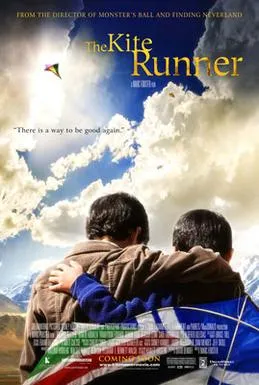Historical accuracy of The Kite Runner

Historical accuracy of The Kite Runner

Characters
Amir Qadiri
Amir is a fictional character created by Khaled Hosseini. His personal journey of guilt and redemption drives the narrative, which unfolds against real historical events.
Hassan
Hassan is a fictional character representing the Hazara ethnic minority and their historical persecution in Afghanistan. His loyalty and suffering are central to the novel's themes.
Baba
Baba is a fictional character representing the privileged Pashtun elite of pre-Soviet Kabul and the complexities of Afghan masculinity and honor. His hidden secrets drive parts of the plot.
Ali
Ali is a fictional character, representing the Hazara servant class loyal to Pashtun employers.
Assef
Assef is a fictional antagonist embodying ethnic prejudice (specifically Pashtun supremacy) and the brutality associated first with bullying and later with the Taliban regime.
Rahim Khan
A fictional character serving as a mentor figure to Amir and the link between his past in Afghanistan and his present in America.
More characters
Soraya
A fictional character representing the Afghan diaspora community in California and Amir's life after leaving Afghanistan.
Sohrab
A fictional character representing the generation of children orphaned and traumatized by the conflict and Taliban rule in Afghanistan. His rescue is central to Amir's redemption arc.
General Taheri
Represents the displaced Afghan elite living in exile in the US, clinging to past status and traditions. While fictional, he embodies a real type of figure within the Afghan diaspora community.
Story
Kite fighting/running culture in Kabul
The film accurately portrays the vibrant tradition of kite fighting (Gudiparan Bazi) and kite running as a significant cultural practice in Afghanistan, especially during winter, before being banned by the Taliban.
Peaceful depiction of 1970s pre-Soviet Kabul
Captures the atmosphere of relative peace and modernity in Kabul during the final years of the monarchy, contrasting sharply with later periods.
Ethnic tension between Pashtuns and Hazaras
Accurately reflects the historical and ongoing discrimination and persecution faced by the Shia Hazara minority at the hands of dominant Sunni Pashtun elements in Afghan society. Some critics argue it stereotypes Pashtuns negatively.
1973 coup overthrowing the monarchy
The film accurately includes the historical event of the 1973 coup led by Daoud Khan, which overthrew King Zahir Shah and marked the beginning of decades of instability.
Soviet invasion of Afghanistan (1979)
The depiction of the Soviet invasion and its disruptive impact, leading to widespread conflict and displacement (like Amir and Baba fleeing), reflects historical reality.
Flight of refugees to Pakistan/USA
Accurately portrays the mass exodus of Afghan refugees to neighboring countries like Pakistan (Peshawar) and eventual resettlement in Western countries like the United States during the Soviet war and subsequent conflicts.
Life under Taliban rule (late 1990s)
Effectively depicts the oppressive atmosphere under Taliban rule, including strict enforcement of religious law, banning of activities like kite flying, public punishments, and specific dangers faced by Hazaras.
Public executions at Ghazi Stadium under Taliban
The scene depicting a public execution (stoning) at Ghazi Stadium in Kabul accurately reflects the Taliban's documented use of the stadium for such events during their rule (1996-2001).
Child exploitation/abuse by Taliban figure (Assef)
While Assef is fictional, his character represents documented instances of abuse, exploitation of children, and impunity enjoyed by powerful figures within the Taliban regime.
Difficulties/Dangers of traveling in Taliban Afghanistan
Amir's perilous journey back into Taliban-controlled Afghanistan accurately reflects the dangers faced by individuals, especially those associated with the West or opposing the regime, during that period.
Amir's personal story of betrayal/redemption
The specific narrative involving Amir, Hassan, the assault, and the later rescue of Sohrab is the fictional core of the story created by Hosseini, not based on specific real individuals or events.
Existence of orphanages under Taliban
Orphanages existed, often under harsh conditions, reflecting the large number of children affected by decades of war.
Setting
Kabul, Afghanistan (1970s Monarchy Era)
Though filmed primarily in Kashgar, China, the production design effectively recreated the look and atmosphere of a relatively peaceful, more cosmopolitan Kabul before the decades of war began.
Peshawar, Pakistan (Soviet War Refugee Setting)
Represents the crowded, difficult conditions faced by Afghan refugees in Pakistani border cities during the Soviet-Afghan War.
Kabul, Afghanistan (Taliban Era)
Effectively contrasts with the earlier depiction, showing a city scarred by war, under strict Taliban control, with visible signs of oppression and destruction (again, filmed primarily in Kashgar).
Fremont, California (Afghan Diaspora)
Accurately portrays the setting for the Afghan immigrant community in California, showcasing their adaptation to American life while maintaining cultural traditions.
Kite fighting tournament settings
Captures the visual excitement and cultural significance of these events as described in the novel, taking place in open areas or rooftops within Kabul.
Ghazi Stadium under Taliban rule
The depiction of the stadium being used for public punishments/executions under the Taliban aligns with historical accounts of its use during the 1996-2001 period.
Depiction of Afghan homes (Wealthy vs. Servant)
Illustrates the socio-economic contrasts through the settings of Baba's spacious mansion versus Ali and Hassan's modest mud hut on the same property.
Costumes and attire across different eras/locations
Generally reflects the changes in clothing styles from the more Westernized fashions of 1970s Kabul to the traditional attire enforced under the Taliban, as well as styles in Pakistan and the US diaspora.
Use of Dari language
The extensive use of Dari (Afghan Persian) throughout the film adds significantly to the authenticity of the setting and characters.
